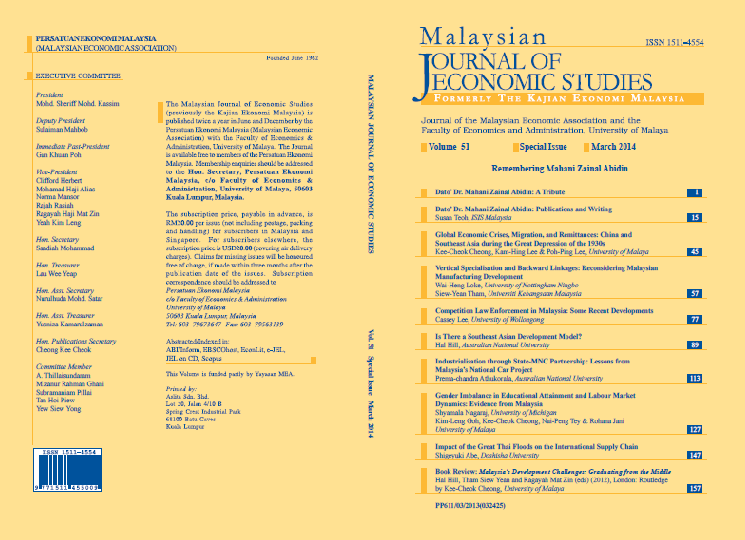Vertical Specialisation and Backward Linkages: Reconsidering Malaysian Manufacturing Development
Keywords:
Backward linkages, Malaysia, manufacturing, vertical specialisationAbstract
Malaysia has undergone substantial transformation, shifting from primary commodity to manufacturing production in about five decades since independence. The government is currently concerned with shifting from a middle to high income economy. The Tenth Malaysia Plan (2011-2015) has identified 12 key drivers of economic activities that will serve to propel the country toward a high income economy. Of these 12 activities, only palm oil and related products, electrical and electronics (e&e) and information and technology (IT) sub-sectors are related to manufacturing, while others are services. The objective of this paper is to identify manufacturing sectors that can be further developed to facilitate economic growth. Using Hummel’s vertical specialisation index and Rasmussen’s backward linkage index, we divide the manufacturing sector into four main groups, using the 2005 Input-Output table of Malaysia. Identifying these groups of industries will enable the government to focus not just on the palm oil and related products, e&e and IT sub-sectors alone, but to diversify to other sub-sectors that have a great potential to facilitate the shift to a high-income economy.

